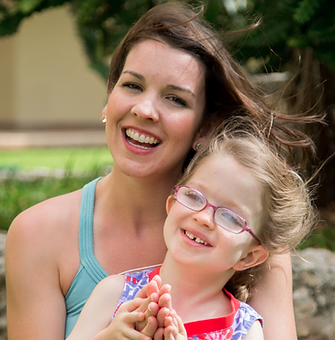Dear GFPD Family,
Thank you for reaching out to The Global Foundation for Peroxisomal Disorders (GFPD.) We know how overwhelming it can be to receive a diagnosis of a peroxisomal disorder and are glad you found us. Please know that you are not alone. The GFPD currently connects more than 600 families from over 40 countries with the following types of Peroxisomal Disorders: Zellweger Spectrum Disorder (ZSD), D-Bifunctional Protein Deficiency (DBPD), Acyl-CoA Oxidase Deficiency (ACOX), and Alpha-Methylacyl-CoA Racemase (AMACR) Deficiency.
These patients and families have an array of diverse experiences creating an invaluable source of support. You may have some difficult days ahead of you, but please remember that there are many of us who are walking this journey with you. The Global Foundation for Peroxisomal Disorders (GFPD) can help; you do not have to face this diagnosis alone.
You may have been told that you or your child has Zellweger Syndrome (ZS), Neonatal Adrenoleukodystrophy (NALD), Infantile Refsum Disease (IRD), or Heimler syndrome. As the understanding of peroxisomal disorders has grown, there has been a movement away from the use of how these were historically described. It is now recommended to replace these names with the overall classification of this spectrum by using the terminology, Peroxisome Biogenesis Disorder-Zellweger Spectrum Disorder (PBD-ZSD). You may also see us simply use peroxisomal disorders to be inclusive of all phenotypes the GFPD supports, including, D-Bifunctional Protein Deficiency (DBPD), Acyl-CoA Oxidase Deficiency (ACOX), and Alpha-Methylacyl-CoA Racemase (AMACR) Deficiency.
Peroxisomal disorders are autosomal recessive disorders, meaning each parent is an unaffected carrier. Any additional children conceived by parents who are both unaffected carriers have a 25% chance of being affected, a 50% chance of being an unaffected carrier, and a 25% chance of being unaffected and not a carrier (see graphic at the end of this letter). The incidence rate is estimated to be 1/50,000 live births. Right now, the GFPD knows of approximately 220 individuals living around the world with a peroxisomal disorder.
We often say that an individual affected by a peroxisomal disorder “writes their own story,” as each one is unique. Even individuals with the same mutations are often impacted differently. Children at the severe end of the spectrum typically do not survive their first year. Children on the moderate or mild end of the spectrum may live into childhood, teen years or beyond, although most children do not live past age ten. Hallmark symptoms of peroxisomal disorders include sensorineural hearing loss, vision loss, hypotonia, seizures, developmental delays, liver and kidney issues, problems with bone formation, feeding issues, and adrenal insufficiency.
Children who are at the most severe end of the spectrum typically meet very few developmental milestones. Children at the mild end of the spectrum often learn to walk, talk, read, and develop varying degrees of independence. Some children have suffered a regression resulting in the loss of skills previously gained. Therefore, it is difficult to determine where an individual may ultimately fall along the spectrum. Early intervention and ongoing therapy services such as: physical therapy, occupational therapy, speech, feeding therapy/nutrition, hearing and vision services are often necessary and prescribed for a child with a peroxisomal disorder throughout his/her lifetime.
While there is currently no cure for peroxisomal disorders, treatment is symptomatic. The published article “Peroxisome biogenesis disorders in the Zellweger spectrum: An overview of current diagnosis, clinical manifestations, and treatment guidelines” linked here but also available on the Scholarly Articles page of the GFPD website, along with other articles that we encourage families to read and share. Please remember, this information is not to take the place of your medical team.
Twelve years ago, I joined with a small group of parents to do something and turn the pain of our childrens’ diagnoses into something positive. We wanted to make sure that no family ever had to endure the pain and isolation of a diagnosis of a peroxisomal disorder without support. Today, the GFPD is a 501(c)(3) non-profit public charity committed to improving the lives of individuals with peroxisomal disorders by funding research, championing scientific collaboration, and empowering families and professionals through educational programs and support services.
On our website you will find more information about the GFPD and the various ways we support families, professionals, and research. You will also find information about our Family Directory, advocacy, research updates, studies currently available, and more.

Again, thank you for connecting with us. I am so sorry that you have a reason to find the GFPD, but I am hopeful that you will find support and love in our community. We look forward to getting to know you and your family.
With hope,
Melissa Bryce Gamble
Mother of Ginny, Co-Founder and Executive Director
